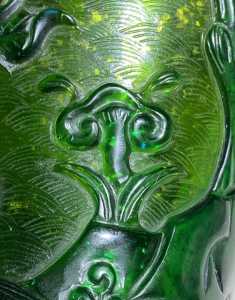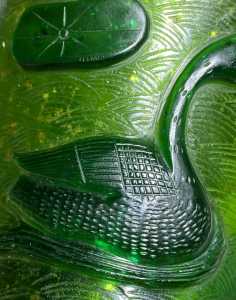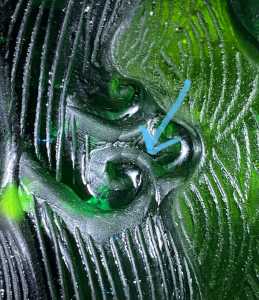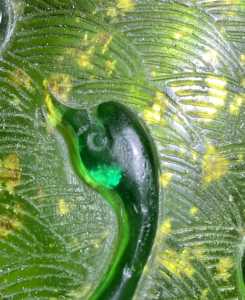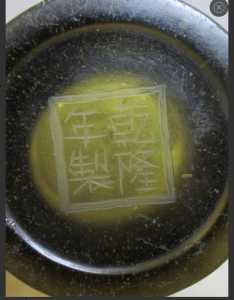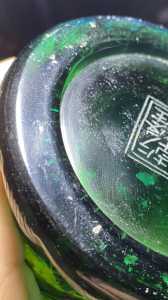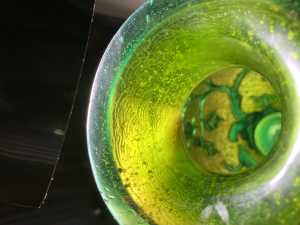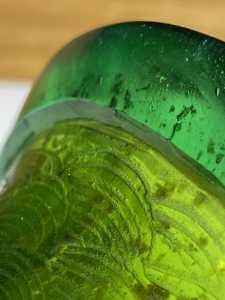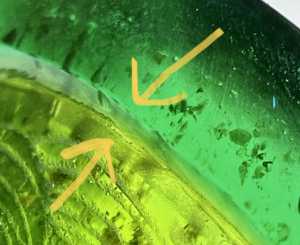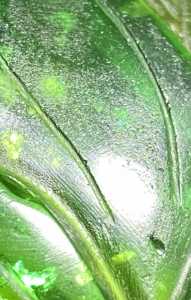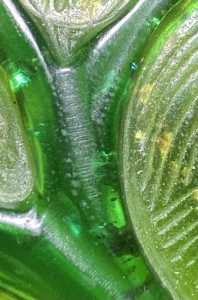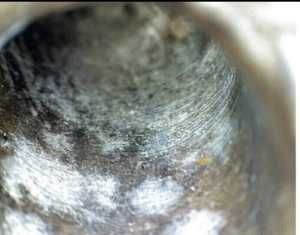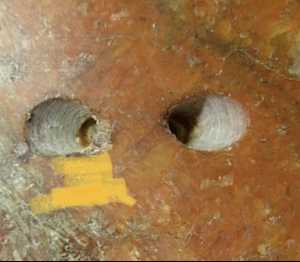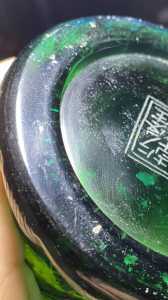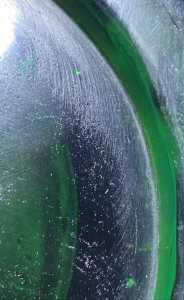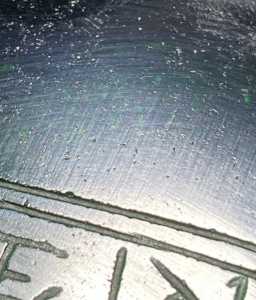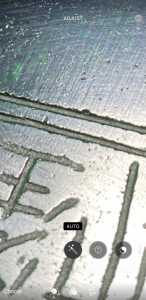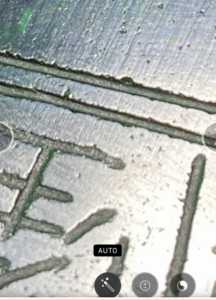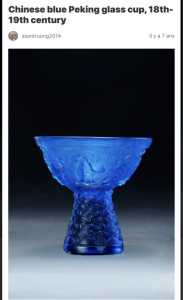The Chinese and Asian Art Forum. For Fans, Collectors and Dealers.
 Basic Rules For the BidAmount Asian Art Forum: Talk about whatever you want. You can even discuss and offer things that are for sale if they are authentic. Maximum image file size per post is 2 MB. Images of 700pxl x 700pxl are optimal if saved at a medium resolution. Be respectful of others and enjoy yourself. Click the YouTube link for a brief tutorial on using the forum. You can also EMBED Videos by cutting and pasting from You-Tube, Vimeo etc.
Basic Rules For the BidAmount Asian Art Forum: Talk about whatever you want. You can even discuss and offer things that are for sale if they are authentic. Maximum image file size per post is 2 MB. Images of 700pxl x 700pxl are optimal if saved at a medium resolution. Be respectful of others and enjoy yourself. Click the YouTube link for a brief tutorial on using the forum. You can also EMBED Videos by cutting and pasting from You-Tube, Vimeo etc.
NOTE: To post an item or add a new post, click open the category title from the FORUM LIST, and CLICK the Blue ADD TOPIC button.
Why I believe this vase is not modern.
Picture above shows no parallel lines. Marks are consistent with horizontal lathe wheel.
This picture shows careful attention to not over shoot the lines the feathers holes are not cup shaped or
This picture shows the cutting wheel marks just like on jade pieces
You can see in this picture the eyes are not done with a hollow diamond drill.
Here is a picture of a base from a major auction house and one from mine notice the same abrasive marking
This picture shows glass bubbles in both layers
This picture shows the carving thickness of over 1/8 you can see it’s definitely layer
@lotusblack Brian, I'm sorry for coming off critical in my earlier post.
What strikes a nerve with me, in a general sense, is that collectors of Asian art (at all levels) have a tendancy to justify their decision to buy/collect a piece on the basis of finding individual components that they believe support authenticity (ie. the right foot rim, the right color blue, appropriate wear, etc.). However, these traits are too easy to fake.
What I like about Peter Combs' approach to authentication is that he seems to take at first a very wholistic approach to the appearance of how an object looks, before digging in the weeds to verify the individual traits. For me, this is the most logical approach.
So, when I ask, 'what did you find artistic about your vase', I'm not being facetious (entirely), but rather trying to understand how you came to the conclusion that this vase A) was a good example of the type/style of Peking glass produced in the Qing dynasty, and B) worth stepping out of your spending comfort zone.
Trust me when I say this....NOBODY understands better than I, the impulse to buy an object that they believe could be a valuable treasure! And, while it may seem from the nature of my posts that I pull a rabbit out of a hat every week, let me say that I spend around 20-40 hours every week looking online and at shops for things to buy (it is my occupation), and I've been fortunate to have some high dollar successes to afford me a few mistakes along the way (yes, I make some bad buys!).
However, the reality is that truely collectible art is rare, and I would estimate that 99% of what I see everyday is either inferior quality of work, or poor condition.
What I would hate to see is for an enthusiasts like yourself to get bogged down with a collection of objects that are difficult to resell, don't hold much value and won't appreciate in value, then exhaust your budget to the point that when you are presented with a great opportunity to buy a valuable treasure, you're out of ammo and the next guy gets it. And unfortunately, I see it all the time, at every shop and every antique show....it's very frustrating.
I am not a wealthy person, nobody in my family collected art/antiques, and I had to learn these lessons the hard way (even with the help of some well meaning mentors). Nothing would make me happier than to known that my words, as harsh as they might be sometimes, helps someone like you to successfully find/buy a real treasure and avoid all the difficult pitfalls I've endured along the way.
Restraining the impulse to buy is a hard trait to learn, but it is really necessary unless you are 100000% what you are buying. In otherwords, you should be able to pull up a museum reference or major auction house record, put your piece side by side with it, and anyone with working eyes will say, 'oh yeah, that's it!'.
The response time on this forum is nearly immidiate, versus AsianArt.com which at best you have a 2 day wait. There's no good reason that you can't post a cell photo and wait 30 minutes for someone to give you some additional advice.
Anyway.... Regarding your green peking glass, I think if you go to Christie's or Sotheby's and put 'green peking glass' into the search, you can see some examples for comparison. You can go to LiveAuctioneers.com and do the same thing to see lesser quality examples, too. And of course, most of the major museums offer online searches of their collection.
Hopefully, no hard feelings.... I want to be as helpful to you and everyone as I can.
agree 90% I disagree on this:
NOBODY understands better than I, the impulse to buy an object that they believe could be a valuable treasure!
and this is one of the most important things we have to struggle and polish along the way... the belief it can be a treasure
😀 😎
Here you can see micro abrasives used during polishing not high speed polishing. This is the same method is jade this is why old jade has a matte finish.
Abrasives marks left by lathe high speed tools don’t leave uniform abrasive marks here is a old jade piece to compare. You can see the abrasive rings
@lotusblack Brian, Peking glass is not a serious interst of mine, but I'd like to at least give you food for thought on the technical aspects you seem to be pointing to as reason to believe the piece is old.
First, if we are to get into a discussion on the technical construction of how the surface should look and such, let me provide these two posts which give good detail to the surface and carving of the glass, one an 18th c. example from the MET Museum, and the other a 19th c. example sold by Sotheby's (but it appears it might of went unsold since there is no posted sales result).
https://www.metmuseum.org/art/collection/search/60618
The MET example allows you to really zoom in really close.
Before examing the details, let me say that I tried searching for green Peking glass in museum collections and at major auctions.... not easy to find any examples, just the one example I posted above. That's kind of a red flag.
Now, compare the edges of the cut marks to the examples I've provided. Your vase has sharp cuts / crisp edges, and rather irregular in length, spacing, and perhaps even depth. The examples I've provided have polished/rounded edges, very carefully spaced and of equal depth.
Regarding the texture of the surface of the glass, the pits you see on your vase do not seem to exist on the examples I've cited. In fact, I'm not sure I can explain that type of pitting other than to say it looks very much like the pitting seen on sand cast bronze.
It is fairly common these days for cast pieces to be tooled in order to give the appearance of being carved, so the pits might be indication of casting in sand, and later carving or use of acid to create a carved look.
Finally, the Qianlong mark seems a very weak. Granted, Republic period Peking glass sometimes have equally inferior marks, but in combination with all the other concerns, I'm not convinced it's even that old.
Mark can better respond to comparisons on how Peking glass and Jade are carved, but be aware that a comparison with jade, perhaps the most faked substance in the world, does bring up the possibility that like jade, age and tooling can be faked.
https://www.bonhams.com/auctions/22411/lot/7139/?category=list
oh, you've already post it this base...
@lep I think that is a good example. Yes, the mark is really poor, but to me it looks more crisp. Also, notice the deep and distinct foot rim.
BUT, I noticed something else when comparing the mark on Brian's vase and this one....
Here is a photo posted by Brian...
Look at the surface of the bottom of the vase...Do you see the circular scratch marks? Looks like a rotary tool polished the bottom.
Antique polishing was rotary and abrasive. For some reason we think in the late nineteenth early twenty century civilization people were still using sticks and rocks. But steam engines pulleys and more advanced tooling was already in manufacturing. If it was a modern polishing method would it not be clean and crispy. Either way I don’t see the rotary pattern myself they are in one direction
I know nothing about Peking glass. I do know it's a specialized area.
According to @Tam18 in 2018 post response to @Brettm stated that these are highly faked. Especially the green with birds. Unfortunately Tam has not posted in a long time. Perhaps if @xin_fawis pops in he can offer his opinion.
Looking at the images posted I strongly believe that the Qianlong mark is a after thought. The mark is crudely engraved. You will note there is substantial chipping to the sides of the mark. This indicates to me that the mark has been added using a modern drill.
Whether the vase itself is old, new or inbetween I really can't speculate other than I don't think it's imperial quality. It could be a early 20th century example. The rendering of the figures appears to be not from a modern drill. But the mark does!
I dont think it's a brand new copy where I think it would have been fully caste not engraved to the extent it is.
It's been a interesting discussion. I do hope others more proficient than myself pop in with their thoughts.
So in conclusion if pushed I am thinking it's a republican example with a post Qianlong mark added much later.
Just my thoughts.
Mark
My thoughts (as a completely unproficient person as will be clear) are that this is all very interesting and an opportunity to discover something new, but I am afraid without knowing about machines and abrasives, it is all a bit beyond me. I need direct visual comparisons to make sense of topics like this. For example, what do eyes made with a hollow diamond drill look like? What are cup-shaped holes? Why would there be abrasive rings on an older piece like the interior Brian showed us?
Personally, I wouldn't have stepped outside my financial comfort zone for this vase. It is very nice, I am not sure about the age but that in a way is irrelevant because I simply don't think it is special enough to warrant the risk.
This isn't the issue of us all seeing beauty in different ways, I mean that I don't think the work is exceptional. It is like my feeling on the Japanese cloisonné pieces, I wouldn't necessarily want one for me but I do appreciate the skill, the exceptional quality, whereas I like this vase, it would be comfortable in my house, but I don't get that feeling of quality, of something special.
@lotusblack @greeno107 @imperialfinejems @julia
Hi Brian, Greeno, Mark, Julia and all -
Really not my area but ...
I have seen/handled several pieces of Qing Imperial glass, both at auction and in private collections, and also attended several lectures on this subject ...
The style/writting of the Qianlong mark on this vase is totally wrong, authentic marks are rather more 'scratchy and less precise' in execution, and is certainly not of the period ...
As Mark has implied, it has probably been added later - very easily done and far from unknown on glass ...
As to vase itself, overall quality is far from Imperial. It does not look modern, and may be an early 20th example but would need to be seen/handled be someone with specialist knowledge to confirm dating ...
An interesting discussion indeed ...
Stuart
Thanks everyone for your opinion. I don’t think this is an Imperial nor Qainlong period vase or have I ever. The gold flaking has only been attributed to 19th century late and early 20th century. I have found earlier snuff bottles but nothing before Tongzhi period. I have found one in a major listed as 19th/20th. My concern is the lack of history I personally can not find any information on the gold flaking. I have found many versions but nothing of who and why. But when I look at it I get a Art Deco feeling. Just so everyone knows my comfort zone is pretty low. Lol I have never paid full price for anything. Now as for Peking glass we have to start understanding that there are many forms of Peking the layered method is not the only standard applied.
@imperialfinegems Mark Im in agreement with your mark assessment. I don’t even think it was written by the Chinese it is the only area where the lines don’t cut the mustard. But when I look at the mark it looks very blocky uneven and wrong. It looks out of place compared to the rest of the vase. I guess everyone wants a Qainlong mark.
Thanks for visiting "The BidAmount Asian Art Forum | Chinese Art"
If you sell on eBay, or have a shop feel free to post images and descriptions and links.
Check back often for discussion about the latest news in the Chinese art and antique world. Also find out about the latest Asian art auctions at Sotheby's, Christie's, Bonhams and Tajans.
Auction results for: fine porcelain, ceramics, bronze, jade, textiles and scholar's objects. As well as Japanese, Thai, Vietnamese and other Asian cultures.
Thank you,
Peter Combs
Topics and categories on The BidAmount Asian Art Forum | Chinese Art
Kangxi vases, Kangxi dishes and chargers, Kangxi ritual pieces, Kangxi scholar's objects, Qianlong famille rose, Qianlong enamels, Qianlong period paintings, Qianlong Emporer's court, Fine porcelain of the Yongzheng period. Chinese imperial art, Ming porcelain including Jiajing, Wanli, Xuande, Chenghua as well as Ming jades and bronzes.
The BidAmount Asian Art Forum | Chinese Art
A free Asian art discussion board and Asian art message board for dealers and collectors of art and antiques from China, Japan, Korea, Thailand, Cambodia, Vietnam and the rest of Asia. Linked to all of the BidAmount Asian art reference areas, with videos from plcombs Asian Art and Bidamount on YouTube. Sign up also for the weekly BidAmount newsletter and catalogs of active eBay listing of Chinese porcelain, bronze, jades, robes, and paintings.
The art of calligraphy - and for the ancient Chinese it certainly was an art - aimed to demonstrate superior control and skill using brush and ink. Calligraphy established itself as one of the major Chinese art forms during the Han dynasty (206 BCE - 220 CE), and for two millennia after, all educated men were expected to be proficient at it.
The Museum’s collections of Asian art span nearly five millennia and encompass the cultures of China, the Himalayas, India, Japan, Korea, and Southeast Asia. In 2007, the Museum launched an initiative to create dedicated galleries for the collection, beginning with a gallery for the arts of Korea ...
Chinese art is full of symbolism, in that artists typically seek to depict some aspect of a totality of which they are intuitively aware.
China Online Museum is the finest online museum of Chinese art. It features Chinese calligraphy, painting, ceramics, bronzes, carving, and other artworks.
Chinese Ceramics & Works of Art. Overview Upcoming auctions Contacts Auction results ... Christie’s sales of Chinese ceramics and works of art showcase centuries of Chinese history. Held throughout the year in London, New York, Paris and Hong Kong, they attract a wide audience of collectors and connoisseurs vying for pieces as diverse as ...
Explore Asian Art Week. Contact the Specialist Department. Chinese Paintings ... Senior Specialist, Head of Sale. [email protected]. Tel:+1 212 641 5760. Bid in-person or online for the upcoming auction:Fine Chinese Paintings on 10 September 2019 at New York. Bid in-person or online for the upcoming auction:Fine Chinese Paintings on 10 ...
Discover an abundance of must-see art from all corners of a vast continent at Christie’s NY Asian Art Week. From contemporary classical and Chinese paintings to works with exemplary provenance from the Art Institute of Chicago, our Rockefeller Paza galleries will be full of ancient treasures and contemporary masterworks in a salute to the vibrant arts of Asia.
Sold to benefit The Art Institute of Chicago’s Asian Art Acquisition Fund, the sale features 84 lots with a focus on Ming and Qing porcelains, and offers a rare insight into the taste for collecting Chinese ceramics and works of art in the Midwest from the end of the 19th century through the 1980s. Highlights include two Wanli wucai garlic-head vases, a Qianlong mark and period, blue and ...
Specialist, Chinese Paintings, Christie's London Dr Malcolm McNeill is a Specialist in Chinese Paintings at Christie’s, based in London. He previously worked as an assistant curator of the Chinese collections and the Victoria and Albert Museum in London, as a researcher at the British Museum, and as a translator and tour guide at the National Palace Museum in Taipei.
The Christie's Education 2020 Conference: The Chinese Art Market 18 Jun 2019 Christie’s Education is delighted to announce our first international academic conference in Asia which will take place in Hong Kong from 26-27 November 2020 at the Hong Kong Convention and Exhibition Centre and will run in parallel with Christie’s Hong Kong Autumn Auctions.
The summer Chinese Art sale in Hong Kong will feature works of art from several private collections, including Qing porcelains and textile from the collection of the legendary Chinese art dealer A. W. Bahr (1877–1959), fine gilt bronze Buddhist sculptures from an old Hong Kong collection, an East Asian collection of Qing dynasty wine cups and jades, and a Japanese collection of Song ceramics ...
Sotheby's Chinese Works of Art Department holds two auctions each year in London, New York, Hong Kong and Paris.
Chinese Art - View Auction details, bid, buy and collect the various artworks at Sothebys Art Auction House.
With more than 340 Chinese works of art dating from the Neolithic to the Republic periods, highlights of this sale include a selection of Qing Imperial monochromes from the collection of Arnold and Blema Steinberg, early ceramics from the Art Institute of Chicago and Chinese porcelain and works of art from the collection of Henry Arnhold.
Results: Sotheby's Asia Week achieved $52.4 million in six strong auctions, exceeding pre-sale estimates. With 76.5% of lots sold and 60.3% of lots surpassing high estimates, the Asian art sales at Sotheby's indicate continued collector interest in the finest works of art from China, India and and the Himalayas.
Today's sale of Important Chinese Art will proceed as planned with sessions at 10 AM and 2 PM EDT. Sotheby's will be monitoring the weather conditions throughout the day and will be available to coordinate alternative bidding options should conditions make it difficult for clients to attend the auction in person.
Bonhams Chinese Art department is renowned for offering the finest works of art representing the richness and breadth of China's artistic heritage, particularly Imperial porcelain, white and spinach green jades, cloisonné and Buddhist art. Specialised international auctions are held globally, including London, Hong Kong and San Francisco.
Bonhams : Chinese Works of Art We use cookies to remember choices you make on functionality and personal features to enhance your experience to our site. By continuing to use our site you consent to the use of cookies. Please refer to our privacy and cookie policies for more information.
Bonhams Fine Art Auctioneers & Valuers: auctioneers of art, pictures, collectables and motor cars. We use cookies to remember choices you make on functionality and personal features to enhance your experience to our site. By continuing to use our site you consent to the use of cookies. ... Chinese Art (US) General enquiries
Bonhams : Fine Chinese Art We use cookies to remember choices you make on functionality and personal features to enhance your experience to our site. By continuing to use our site you consent to the use of cookies. Please refer to our privacy and cookie policies for more information.
Bonhams Fine Art Auctioneers & Valuers: auctioneers of art, pictures, collectables and motor cars Bonhams : Asian Art We use cookies to remember choices you make on functionality and personal features to enhance your experience to our site.
Bonhams are international auctioneers of fine Chinese and Japanese art. We specialise in rare Imperial and Export Chinese ceramics and works of art, as well as Japanese ceramics, fine and decorative works of art from the Neolithic Period to the 20th century. View on map
Bonhams Fine Art Auctioneers & Valuers: auctioneers of art, pictures, collectables and motor cars. We use cookies to remember choices you make on functionality and personal features to enhance your experience to our site. By continuing to use our site you consent to the use of cookies. ... Asian Art Bonhams. Work. 22 Queen St.
